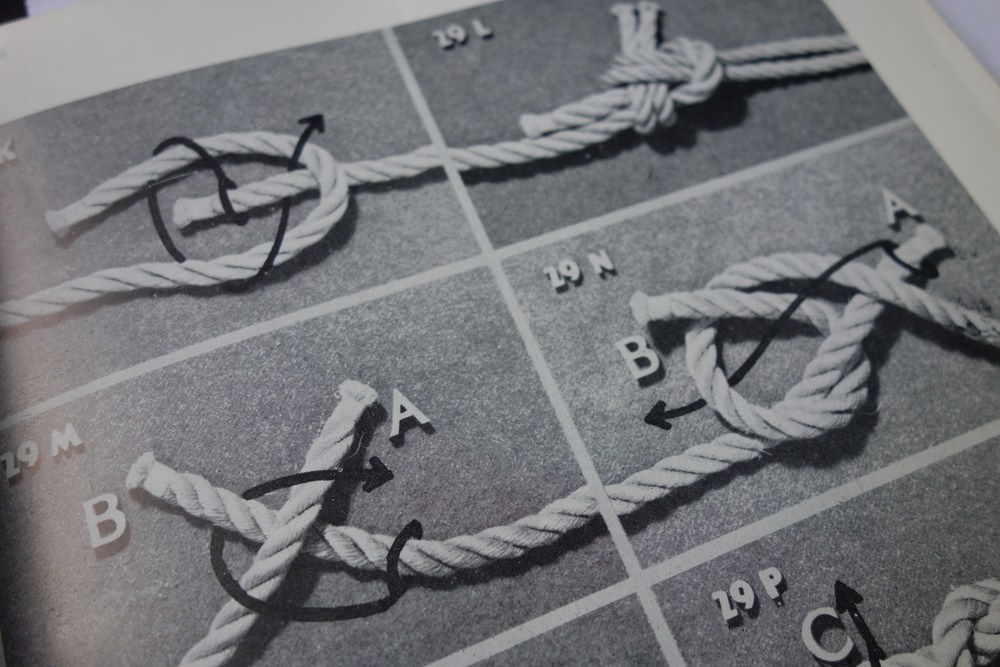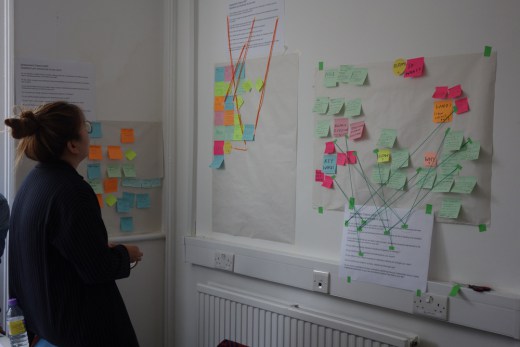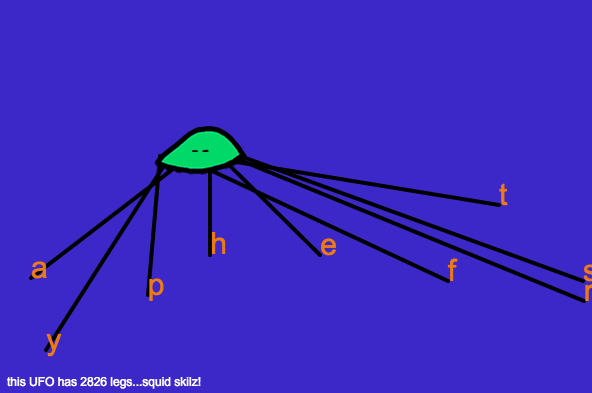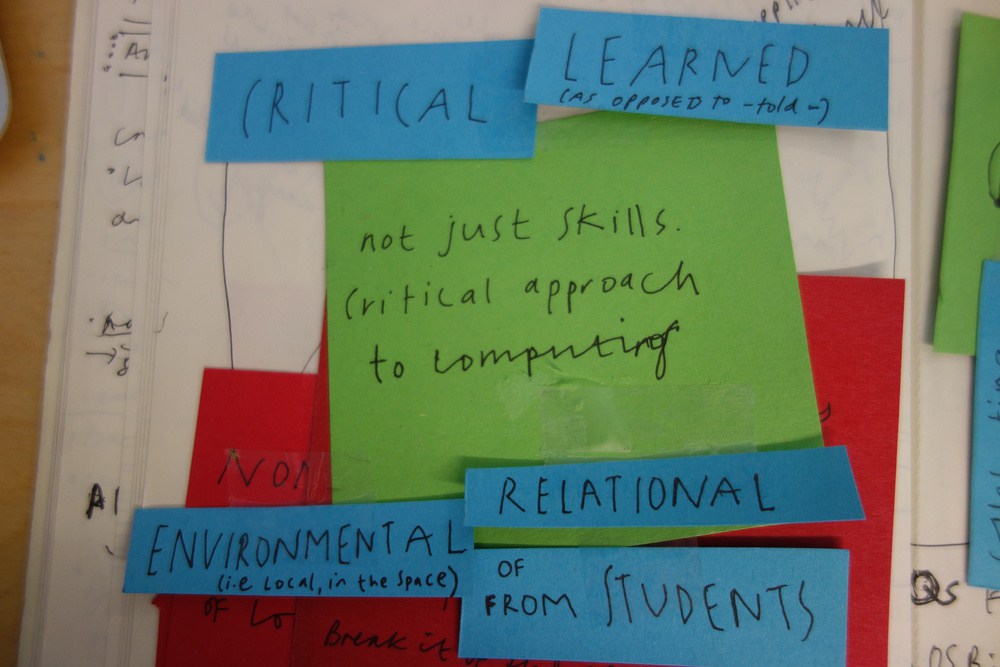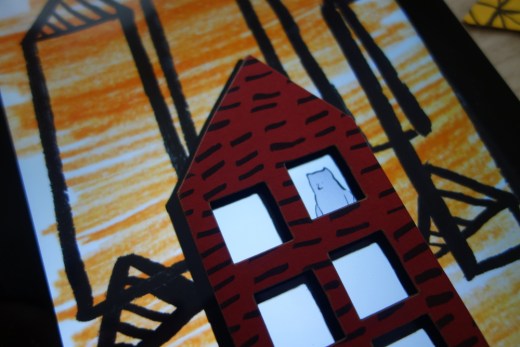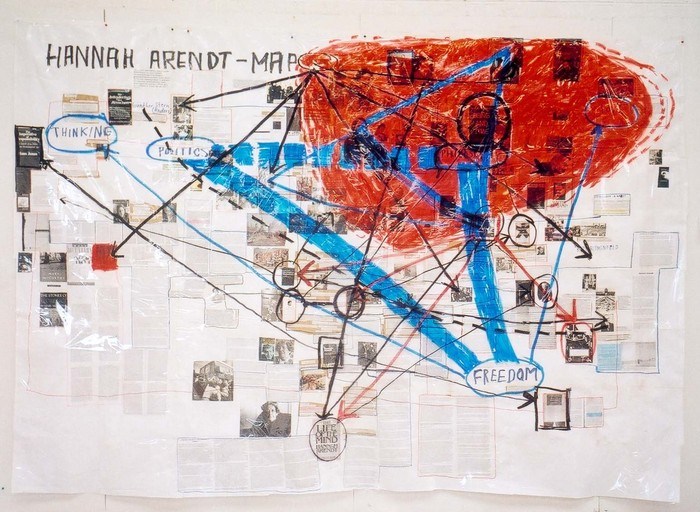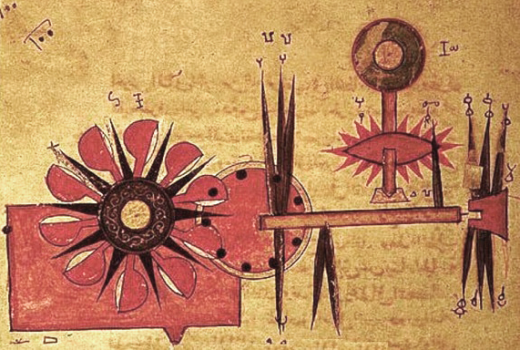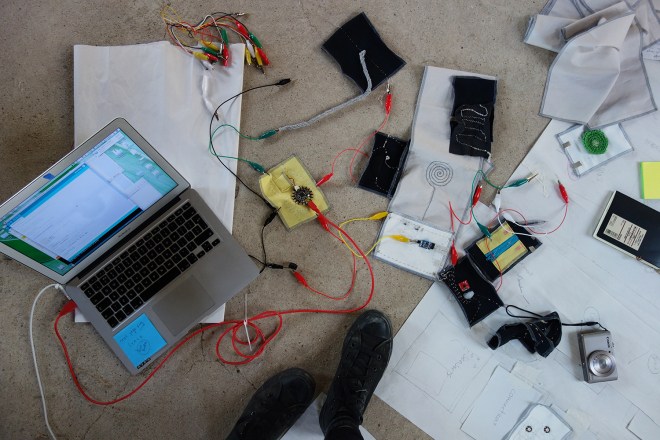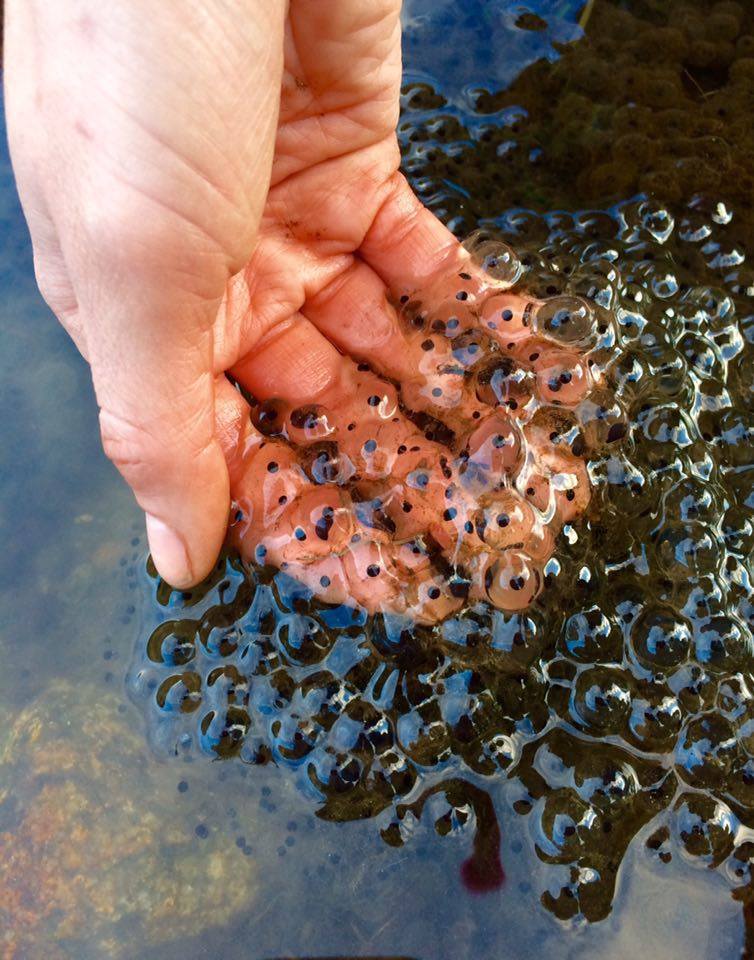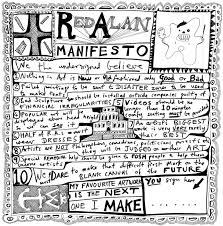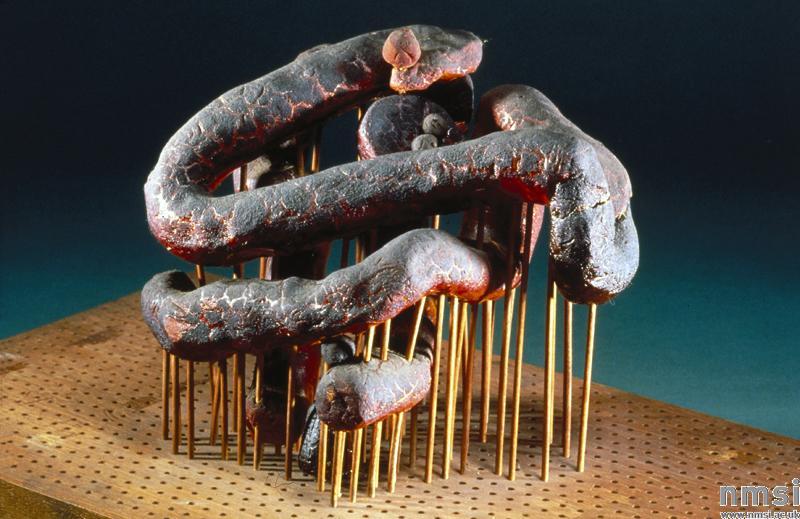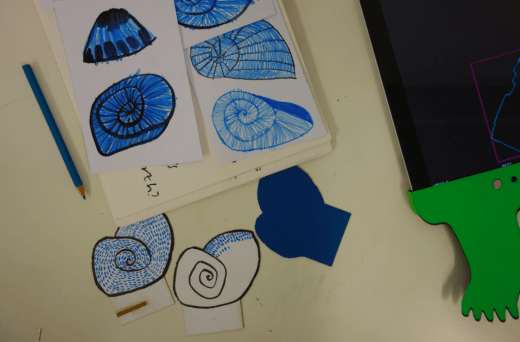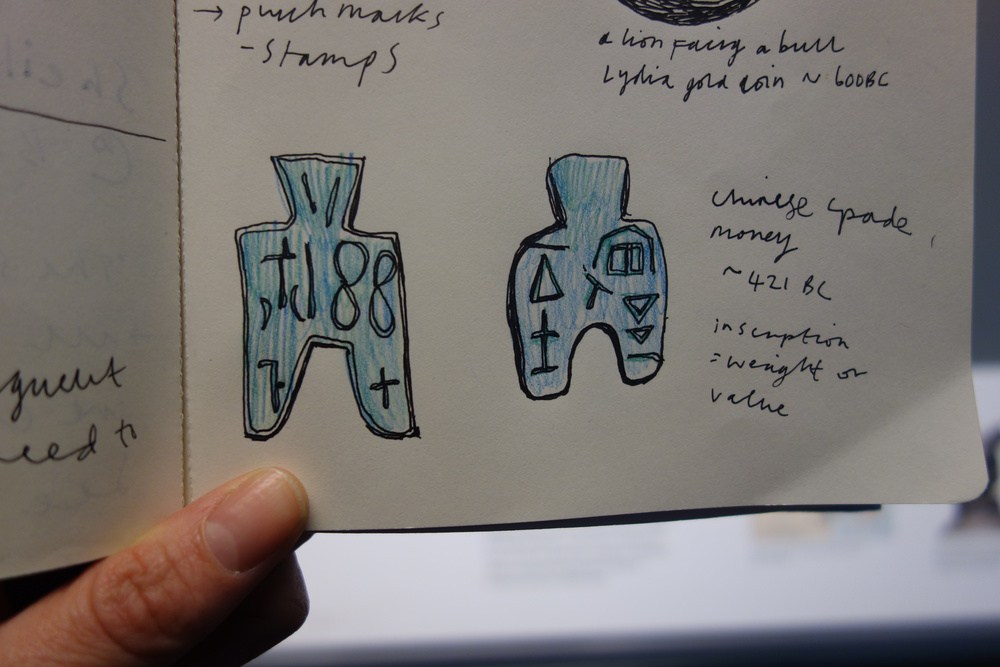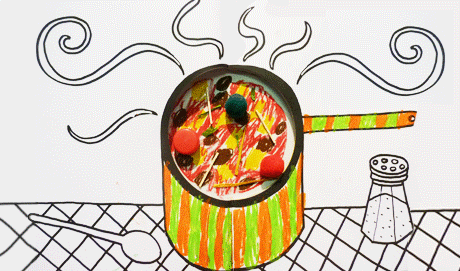-
The art of knotting
To start my inquiry into the life of knots I’m going to make some knots. Sounds obvious huh? I got a book out of the library called “The Art of Knotting and Splicing” by Cyrus Lawrence Day. It was originally published in 1947 as a follow up to his 1935 book “Sailors’ Knots”. The book…
-
Mapping, methods and methodologies
Cor blimey it’s all got quite map-py recently. We had a “Mapping our IRP” workshop with Lili. And we learned something of methods and methodologies, which I am making steps towards understanding. They go a little something like: Methodology Methodology is the study of how research is done, how we find out about things, and…
-
Affordancing
I learned a new word this week: affordances. It is one of the favorite words used by Duncan on the Materialties program. “An affordance is a relationship between the properties of an object and the capabilities of the agent that determine just how the object could possibly be used.” Don Norman (2013). The Design of…
-
Why knots?
(I fear that the knot pun will never get tiring) Our project for the Materialities module is to explore a material through any of the following activities: conducting hands-on experiments with your “material” or “thing”; proposing speculative designs for its alternative use or “re-use”; public performances or interventions that deals with its exploitation, consumption, or…
-
Happy Fathers Day!
// happy fathers day pa! // thanks for helping me learn about being creative. // thanks for being silly. // thanks for teaching me that being nerdy is ok. // thanks for being kind. // thanks for being you. // love you xxx The code is below: PImage webImg, webImg1; int imgWidth = 100; int…
-
Research prezo
We presented our research to our groups the other day, and I had to make some rapid decisions in order to focus my project. My feedback was that it was a huge topic, and using the term “squishy” has kind of become a term that describes the solution, rather than the question. General feedback: What…
-
Into the Wild
Lots of development on the book app and it also has a name: Bear Abouts! I tested the latest version with participants at Somerset House during the Into the Wild weekend. The app also has a wonderful soundtrack made with a combo of digital sounds and papery noises, which I will share at a later…
-
Hirschhorn Mapping
Thomas Hirshorn mapping philosophers. I love these. They feel both like they are in motion and situated. They seem like they are still in progress. “There is a certain parallel to be drawn between the process of knowing and mapping. Both are environmentally situated activities, both are carried out along paths of travel, and both…
-
Embodied?
Trying out a thing. I am (and have been in a large part of this MA) led by ideas surrounding embodied learning, and learning through the senses. Donna Harraway argues that science and technology should have an “embodied nature of all vision, and so reclaim the sensory system that has been used to signify a…
-
Machine Wilderness
Machine Wilderness project by FO.AM is a series of workshops and research that question the relationship between new technologies and ecological systems -studying how technology can relate to biological systems. “This program starts from the viewpoint of an organism as an expression of it’s habitat and works within a longterm view of interacting populations surfing…
-
Human Breadboards
Last year I participated in an etextiles symposium. I collaborated with a group of educators to explore learning + etextiles and wrote about what we made. I’ve just been re-visiting this in the process of making steps towards defining “squishyness”. I (think) I may be converging on some kind of meaning, and I think that…
-
A squish by any other name
What is it to be squishy? The first part of my research project is to make steps towards answering this question in the context of learning computing. I’d like to start with exploring some very squishy things. Have you ever delicately plonked your hand in a puddle of frog eggs? This spring (i.e. a few…
-
Manifesto making
Today we participated in a manifesto making workshop. The process was: 1. Split into groups of 5 with people from other programs (i.e. not from Design Education) 2. come up with a “design” manifesto 3. present this to the rest of the group 4. go back to the manifesto, make it less general, and make slogans…
-
Molecular monsters
This week I attended a talk on crowd-sourced science platforms at my (part time) job, Interactive Scientific (iSci). David, a specialist in molecular dynamics, talked about the problems of protein folding, and about several crowd-sourcing platform where users collect and input data with machines to get better data (as opposed to just humans or just…
-
Now Play This
I tested the latest version of the book at Now Play This festival at Somerset House. The book (because of it’s unusually papery interface) was part of the strange controller showcase. It was quite amazing that the device worked, and lasted a day of play with the public, and it was also fun to play…
-
Cutting the strings (or re-arranging them a bit)
I say cutting string because there is a string that connects the page through this book by the wonderful Willaim Wondriska I’m looking into how those strings (pages) are deconstructed and reconstructed in books. Dan Collier’s non-hypertext book is full of strings. And, well, ahhem. Hatually, they are just arranged in a non-linear relational way,…
-
New pages
New pages and also page holding foot things. Yoop.
-
Coin Room
The British Museum has a money room. It houses all sorts of currency including coins, paper, stones, plastic, shells and rf-tags. Also on display at the British Museum is an education project by Artist and designer Heidi Hindler, featuring a group of young people that re-imagined currency through undertaking a design process. The coins…
-
The reincarnation of wonder
When I studied literary theory for my undergrad degree we started the course reading Barthes seminal essay. You know the one. The one about texts gaining meaning through the culture in which they exist, and more specifically through the reader that lives in that culture in which the text exists. That one that when I…
-
Flipology
Other things that invite you into the fabric of the book: flipping! Flipology is the science of flips in books. No, I didn’t make up this term. There is a resident flipologist on the streets of San Francisco who performs flipological acts as an art, I have borrowed the term from him. A flipological text…
